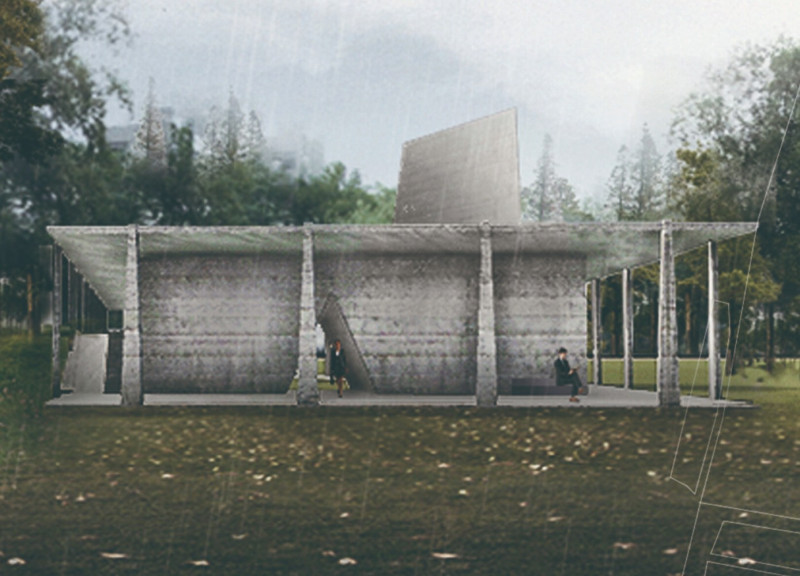5 key facts about this project
The Chamber of Memories at Riga City Forest Cemetery offers a place where memory and mourning come together within a peaceful forest setting. Designed to hold family memorials, the site allows visitors to reflect in a calm atmosphere. Its layout and features cater to the varied ways people grieve, creating a balance of nature and structure.
Design Concept
A key element of the design is a ring corridor that surrounds a crematorium. This two-level structure fits well into the landscape, allowing natural light to enter through a geometric skylight. The design is intended to guide visitors through their emotional journey, encouraging personal reflection as they navigate the different areas of the cemetery.
Spatial Organization
The entrance is marked by a gate building, which includes essential services like restrooms and a visitor center with a café. This structure serves as a welcoming point and helps organize movement throughout the site. Upon entering the courtyard, visitors find a memorial church with a simple structure and a diagonal beam, setting a thoughtful tone that supports the cemetery’s aim of creating a peaceful space for remembrance.
Landscape Integration
The landscape is an integral part of the design. A gentle ramp provides an accessible path through the cemetery, while the graves are arranged in a semicircular pattern at ground level. This arrangement fosters a connection between the memorials and the natural surroundings. Visitors can experience a sense of tranquility and reflection as they move through this thoughtfully laid-out space.
Materials and Durability
The project makes use of recycling concrete, sourced from rubble of demolished structures. This choice reflects a commitment to sustainability and responsible use of resources. Additionally, memorial plaques made from stone or granite ensure that they remain durable over time, maintaining their significance within the landscape.
The crematorium lies quietly beneath the rail of the ring corridor, creating a harmonious balance between the built environment and nature, inviting contemplation in a place meant for remembrance.






















































